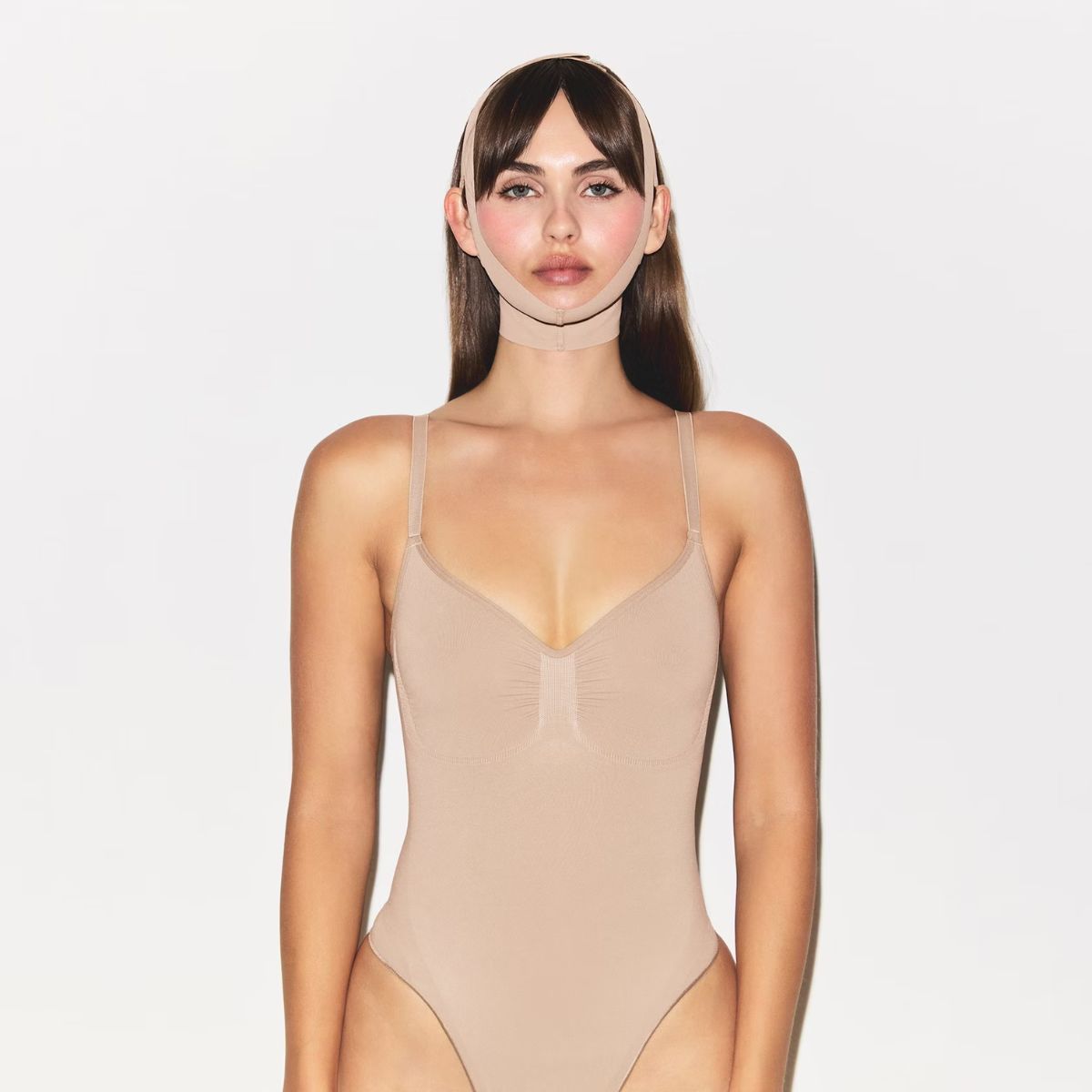The digital landscape, once hailed as a beacon of progress and democratized voices, is paradoxically becoming a powerful engine for the revival of regressive beauty standards and reactionary politics. Recent events, from controversial advertising campaigns to the launch of contentious cosmetic products, highlight an alarming direction where online platforms amplify ideologies that threaten decades of social advancement.
This disconcerting trend is exemplified by the recent debut of Kim Kardashian’s Skims face shapewear, alongside Sydney Sweeney’s polarizing campaign for American Eagle. These instances, while seemingly disparate, collectively underscore a concerning cultural shift. The Skims product, described by critics as reminiscent of medieval torture devices, and the American Eagle advertisement, which ignited debates about race and Western beauty ideals, signal a deeper societal issue concerning beauty standards and their political underpinnings.
Far from liberating individuals from outdated norms, platforms like Instagram, TikTok, and YouTube are increasingly complicit in propagating aesthetics and political viewpoints that roll back social progress. The curated perfection often displayed on these sites, initially perceived as harmless, masks a more insidious influence, contributing to a landscape where traditional and often exclusionary ideals gain renewed prominence.
The pervasive nature of this phenomenon is magnified by the extensive time users, particularly Gen Z, spend on their mobile devices. Research indicates that significant portions of daily life are now consumed by digital engagement, creating fertile ground for the subtle infiltration of regressive ideologies. This constant exposure, often through fragmented and visually driven content, shapes perceptions in ways that are both profound and often unnoticed, impacting online discourse and real-world views.
Contemporary beauty is increasingly defined by narrow, hierarchical, and often retrograde ideals, where features like glassy skin, tiny waists, and symmetrical faces dominate feeds not due to commonality but clickability. This aesthetic hegemony, often reinforced by algorithmic preferences, contributes to a homogenized vision of womanhood, pressuring individuals to conform to an unattainable ideal. The online environment thus becomes a powerful arbiter of what is considered beautiful, often with profound political influence.
The backlash against products like Skims face shapewear, which claims to sculpt the jaw while sleeping, reveals a widespread discomfort with the escalating demands for constant self-optimization. Critics rightly draw parallels between such innovations and post-surgical compression garments or historical instruments of control, highlighting a broader cultural shift that normalizes invasive procedures and promotes a singular, often unrealistic, vision of attractiveness, impacting public discourse on body image.
This potent blend of nostalgia and performance, prevalent in current social media trends, romanticizes past eras characterized by rigid gender roles and systemic inequalities, recontextualizing them as periods of simplicity or “natural order.” Younger users, in particular, are drawn to these aesthetics not for historical accuracy but for the illusion of stability and meaning they ostensibly provide in an increasingly complex world, fostering a subtle yet pervasive political influence.
Despite these concerning developments, the digital sphere also hosts creators who actively challenge these prevailing narratives. By amplifying inclusive beauty, dismantling conventional gender norms, and pushing back against the romanticization of oppressive histories, these voices offer a counter-narrative. Recognizing the inherent politics behind these aesthetics is crucial, as without this awareness, social media risks not only shaping appearances but also profoundly influencing beliefs and societal direction.





Leave a Reply